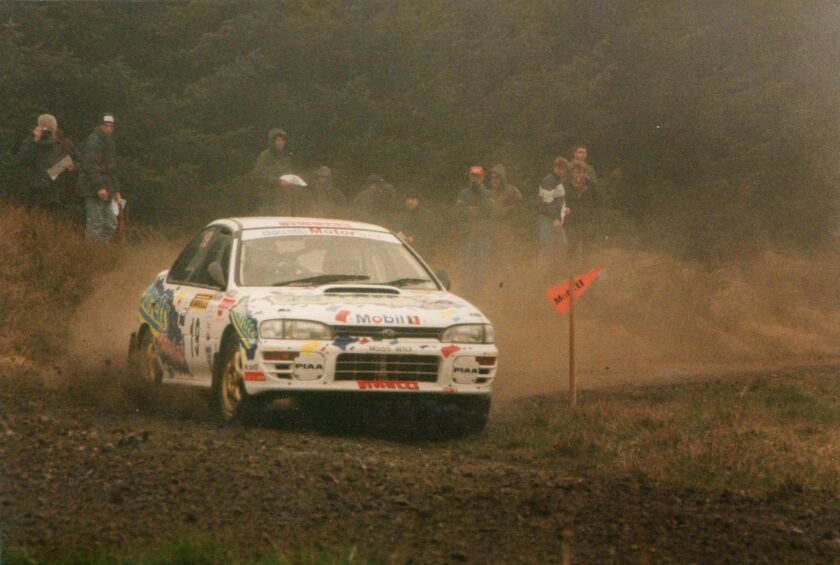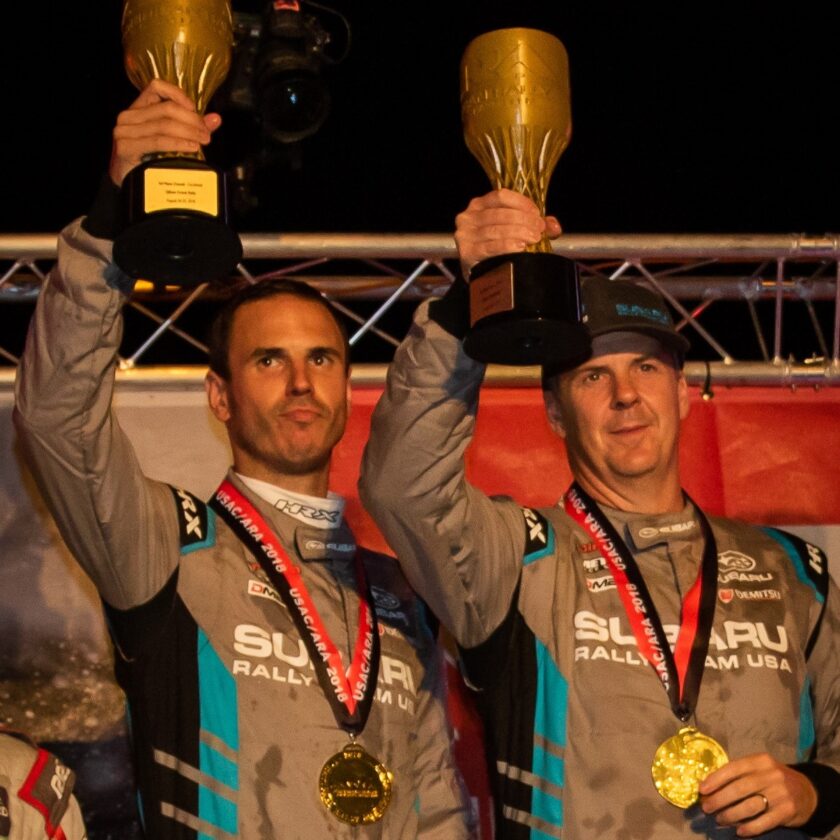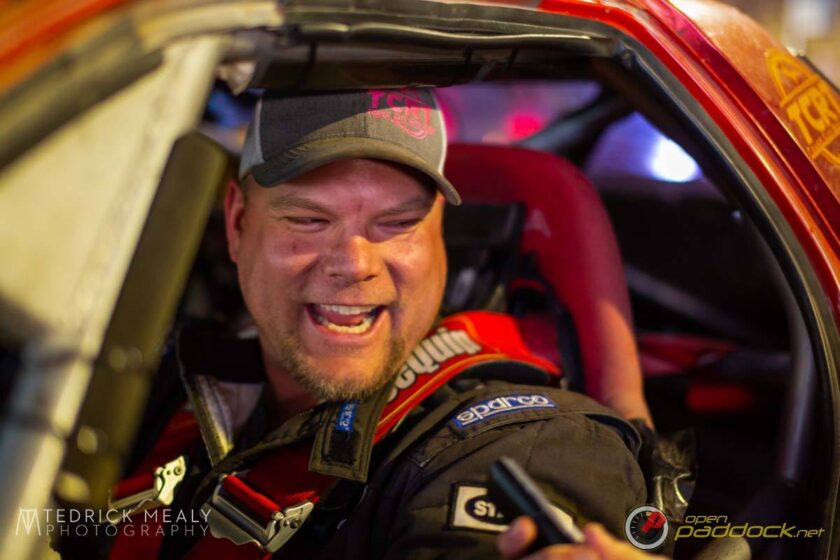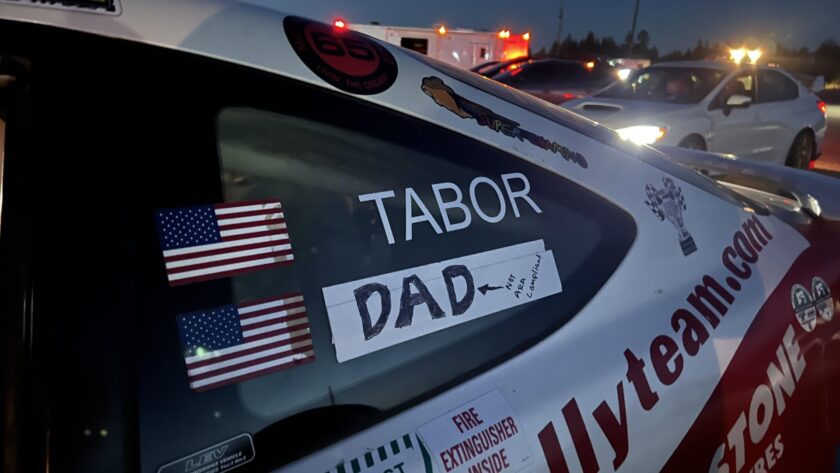Recollections of a Titan of US Rallying
By Jon Scoltock
The ARA series is a different place in 2020. Getting back underway at the Southern Ohio Forest Rally was awesome and it’s great to see the series growing, but it still feels like a very different championship without David Higgins. David is a force that has dominated US rallying for many years, racking up 10 titles since 2002 so, while he is absent from the series this year, it still seemed a good enough excuse to use my second article on OpenPaddock.net to share a few personal memories of this great driver.
While his Rally America and ARA successes will obviously be foremost in the minds of US rally fans, for me, Higgins will always be an icon of British rallying. Alongside his brother Mark, David was a rising star when I was growing up in the 1990s. This also happened to be one of the most significant periods in British rallying history.

During the ’90s, multiple manufacturers were running highly specialized front-wheel drive “Formula 2” cars, creating some of the closest competition the British Rally Championship had ever seen. David had spells with Peugeot, Ford, and Honda, before making the switch to the Group N Subaru Impreza and becoming almost unbeatable. He won three Group N Production Cup titles, in 1997, 1998, and 2002, before winning the British Rally Championship outright in a Hyundai Accent WRC in 2004.

As well as rallying all over the world, David also spent many years running a rally school in Wales. It was here that I met him in the summer of 2012, when I took my rally licence test. I had specifically chosen to do the test at the Higgins Rally School as I had heard good things about the venue, and the chance to be taught by a bona fide pro driver was too much to resist.
When I booked my slot the instructor wasn’t guaranteed, so I was relieved when David Higgins walked into the waiting area on the morning the course started. I was actually a little nervous, not just because I was about to get my licence, but because I wasn’t sure what he would be like. I had contacted him some months earlier while doing some research for an article and his response had been rather short – I was asking him about probably his most difficult season, competing in the Ford Escort RS2000 in 1995 – but when I met him in person he was friendly and seemed interested in my plans for rallying in the future.
There were around five of us that day, but I was the only one there to do the licence assessment, so while the rest all had a chat, I had to start the day with a multiple-choice exam! I went through all the questions, before David cast his eye over my answers, making sure I’d got everything right. I hadn’t, but I had done enough to pass so it was on to the driving. It started with us driving in a convoy following David deep into the Welsh hills. After what felt like almost a lifetime of driving down remote dirt tracks, we arrived in a clearing with a couple of small buildings.
We each took turns going out in the car (a lowly 1.8-litre, front-wheel drive Mitsubishi Lancer) with David, practicing skills like handbrake turns and getting used to driving on gravel. While the Lancer didn’t have huge power, it was a great car to learn in. It felt stable and, if you’ve never driven on a loose surface on proper gravel rubber, the grip available is a revelation – the tyres are just incredible. The toughest part was getting used to the lack of a brake booster, meaning plenty of exercise for the leg muscles and a few moments where I was told I needed to brake harder!
The roads themselves were also fantastic. Based in mid-Wales, the school featured roads very much like you would find on the stages of Wales Rally GB, so much so that many WRC teams used the Higgins Rally School roads as a test venue before the event. I’ve always been more of a tarmac guy but driving on those roads was definitely a pretty special experience.
Towards the end of the day, each of us was given the chance to do some timed runs, just for a bit of friendly competition. My first run was pretty uneventful, but the second spawned a moment that I will never forget.
I carried WAY too much speed through a slight left-over-crest, forgetting the 90 right that followed shortly afterwards. I obviously overshot the turn, but thankfully there was nothing to hit. I don’t know if I was desperate to impress my multi-champion co-driver or to try and beat the young upstart kart driver that was on the course that day, but the red mist was well and truly down. I went wide and kept my foot in and the car scrabbled out of the dust and back onto the road. Midway through this cock-up, calm as a monk, David said through the intercom, “I admire your commitment Jon.” Thanks to that moment, I wasn’t the fastest and I’m not sure it was really a complement, but what a thing to hear from a pro rally driver!
The final part of the day was probably the most special though. With our time behind the wheel done, David took each of us out for a run. He hadn’t worn a helmet up to this point (though maybe he should have done with me?!). David produced one from one of the buildings and we strapped back into the Mitsubishi for the final time realising that this was obviously going to be a bit more of a serious experience.
All I can say looking back on it is…WOW! I felt like I had done a pretty good job, but the way he piloted the car down the gravel tracks was something else. It was hard not to be mesmerised by his inputs and the way he kept the car perfectly balanced, carrying way more speed than I thought possible from a little 1.8-litre front wheel drive sedan. The difference between an enthusiastic amateur and a pro driver really is something else. It’s an experience I will never forget.

Who knows whether we’ll see David back in a rally car in the USA in the future, or whether he will add to that incredible list of rally wins (currently at 46 between SCCA Pro Rally, Rally America, and ARA), but he’s definitely got a permanent spot in my memory, and there is no doubt that his run of success will take some matching.
Jon Scoltock is a motorsports and auto journalist from the UK, producing content on the WRC, national rallying, and a range of motorsport engineering subjects. Formerly an engineer, Scoltock has been involved with building and running cars on events around the UK, as well as driving his own cars and volunteering.
For more of Jon’s view from across the pond, follow him at the below social media links:




